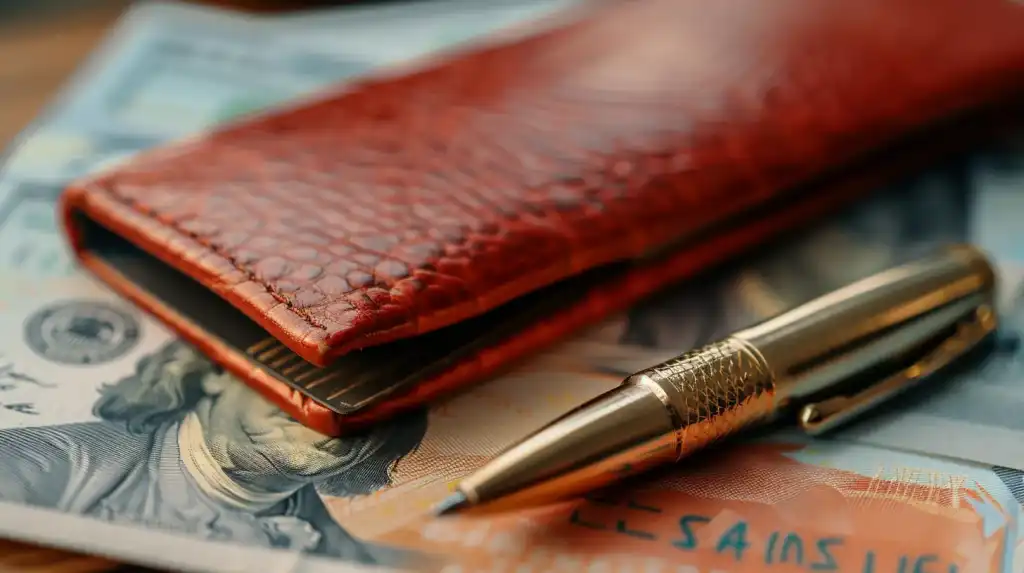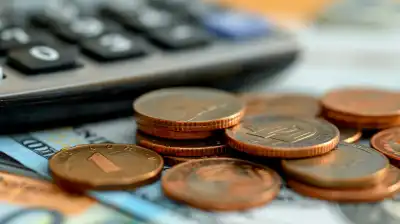05 February 2025
If you're looking for a simple, tried-and-true way to manage your money, you're in for a treat. Ever heard of the envelope system? No, it's not some fancy new app or high-tech tool. It’s actually a classic, old-school method that your grandparents may have used—and guess what? It still works. Yeah, in a world of digital everything and automated accounts, this paper-based system can transform the way you handle your finances. Let’s dive in!What Is the Envelope System?
At its core, the envelope system is a cash-based budgeting strategy that involves dividing your income into various spending categories. Once you've decided how much you want to spend on each category, you stuff that amount of cash into an actual envelope labeled for that category.

Simple, right? That’s the beauty of it. No complex spreadsheets or confusing apps. Just cold, hard cash—and a handful of envelopes.
How Does It Work?
Think of the envelope system like a “money diet.” You’re giving each dollar a specific job, and when the cash in the envelope runs out, guess what? You're done spending in that category until the next budget period. No more swiping a card and hoping you have enough left in your account—it’s all about discipline.
Here’s how it works step-by-step:
1. Calculate Your Monthly Income: First, you need to know how much money you're bringing in each month after taxes. This is your total cash flow for the month.
2. List Out Your Spending Categories: Common categories include housing, groceries, entertainment, dining out, transportation, and savings. Tailor these to your lifestyle, but make sure you cover all your bases.
3. Assign Budget Amounts to Each Category: Once you’ve listed your categories, decide how much to allocate to each one. Be realistic! If you frequently eat out, give yourself enough money to cover those meals, but try not to go overboard.
4. Withdraw Cash and Fill Your Envelopes: At the beginning of each month (or pay period), withdraw the total amount of cash you'll need based on your budget. Then, distribute the money into your labeled envelopes.
5. Spend Only What’s In Your Envelopes: This is where the magic happens. When you need money for groceries, take it from the "Groceries" envelope. Going out for dinner? Grab cash from the "Dining Out" envelope. Once an envelope is empty, that’s it—no more money for that category until the next month.
Why the Envelope System Works
You might be asking yourself, "Why would I use cash in 2023 when I can just tap my card or use Apple Pay?" Fair question. But there’s a method to this madness.
1. It Makes Money Tangible
When you pay with cash, you feel the weight of every dollar you spend. Physically handing over cash is a lot harder than swiping a card. It’s like watching your money fly away before your eyes. You can see and feel the money leaving your hands, which makes you more mindful of your spending habits.
2. It Forces You to Stay Within Your Means
The envelope system gives you a hard stop when it comes to spending. If your "Dining Out" envelope is empty by the 15th of the month, sorry, no more takeout! It teaches you to live within your limits and encourages you to budget smarter next time.
3. No More Overdrafts or Surprise Bills
Since you’re only using cash, you can't overdraft your account or rack up credit card debt. You know exactly how much money you have left. There’s no “I hope this goes through” moment at the checkout counter because you’re fully in control.
4. It’s Simple and Low-Tech
You don’t need to be a math whiz or a tech guru to use the envelope system. No apps to install, no spreadsheets to maintain, and no complicated tracking required. Just cash and envelopes. It’s budgeting at its most basic, and sometimes, simple really is better.
5. It Encourages Thoughtful Spending
When you know you only have $200 for groceries this month, you start thinking carefully about what you’re buying. Do you really need that fancy bottle of wine, or can you go for a cheaper option? The envelope system makes you question every purchase, helping you prioritize needs over wants.
How to Adapt the Envelope System in a Cashless World
Okay, I get it. The idea of carrying around cash in 2023 might feel a little outdated. And yes, many of us have shifted to a more digital lifestyle. But the envelope system is flexible—it can be adapted to work with your debit card or even a budgeting app.
Digital Envelope System
If the thought of carrying around envelopes stuffed with cash makes you cringe, you can still use the principles of the envelope system without going fully analog.
1. Use Multiple Bank Accounts: You can create different checking accounts for each spending category. While this is a bit of an administrative hassle, it works for people who are comfortable with online banking.
2. Use a Budgeting App with Virtual Envelopes: Some apps like GoodBudget or Mvelopes let you create digital envelopes to track your spending. You still assign amounts to each category, but you’re using a digital tracker instead of real cash.
3. Track with a Spreadsheet: If you're comfortable with Excel or Google Sheets, you can create a simple sheet to track your budget categories and spending. It’s like having virtual envelopes where you deduct "cash" as you spend it.
4. Prepaid Debit Cards: You could load a prepaid card with your budget for each category. For example, one card is for groceries, another is for entertainment, and so on. It’s like an envelope, but plastic!
Pros and Cons of the Envelope System
As with any budgeting method, there are both upsides and downsides to the envelope system. Let’s break it down.
Pros:
- Visual & Tangible: You can literally see where your money is going. It forces you to be more conscious of your spending habits.
- No More Debt: Since you’re using cash, it’s impossible to overspend or go into debt.
- Simple: This method is incredibly easy to implement. No complicated software or financial knowledge needed.
- Works for Everyone: Whether you're living paycheck to paycheck or saving for a big purchase, the envelope system can help you stay on track.
Cons:
- Inconvenient: Carrying cash in today’s digital world might feel outdated or even unsafe.
- Doesn’t Build Credit: If you’re only using cash, you’re not building your credit score, which is important if you’re planning on borrowing in the future.
- Requires Discipline: Once the cash runs out, you can’t cheat and swipe a card. If you don’t have the self-discipline to stick to the system, it won’t work.
Who Should Use the Envelope System?
The envelope system is great for people who:
- Struggle with overspending. If you tend to swipe your card without thinking, this method can help you rein it in.
- Are trying to pay off debt. If you’re serious about getting out of debt, the envelope system leaves no room for extra credit card bills or overdraft fees.
- Want a simple, no-fuss budget. If the idea of tracking every penny in an app or spreadsheet makes your head spin, the envelope system provides structure without the hassle.
On the flip side, if you’re someone who pays off their credit card every month to build points or prefers a more digital approach, the envelope system might feel like a step backward. But for those who need a hands-on way to manage their money, it’s hard to beat.
Final Thoughts: Old-School, But Still Cool
In a world where we’re surrounded by digital wallets, automatic payments, and finance apps, the envelope system might seem like a relic from the past. But for many, it offers something those high-tech tools can’t: simplicity and accountability.
By bringing money management back to its basics, the envelope system forces you to be more mindful of your spending. It might feel uncomfortable at first, but that’s kind of the point. When you have to physically hand over cash for every purchase, you think twice about what you’re buying. And sometimes, that’s all you need to stay on track.
So, why not give it a shot? Grab some envelopes, label them, and start filling them with cash. You might just find that this old-school method is exactly what you need to get your finances in order. After all, good money habits never go out of style.


